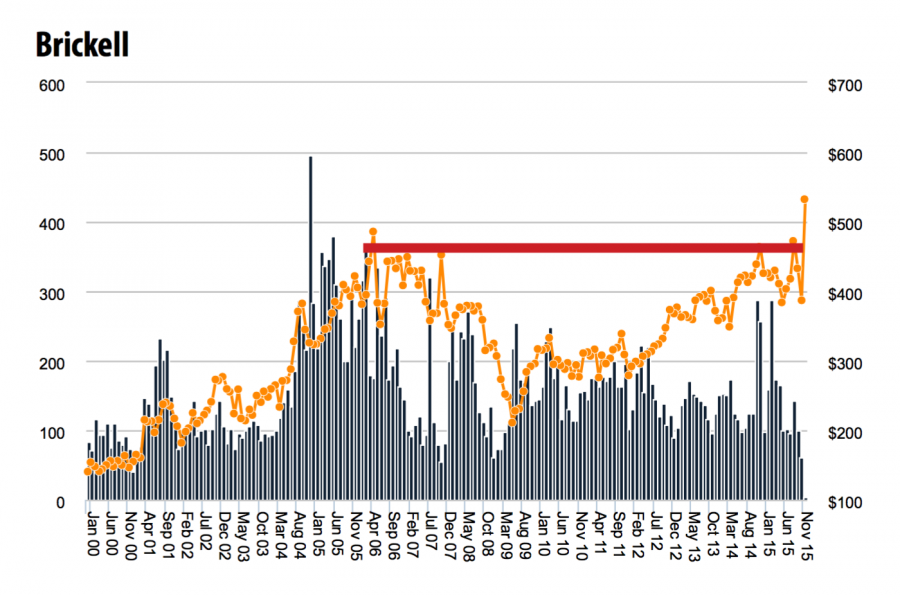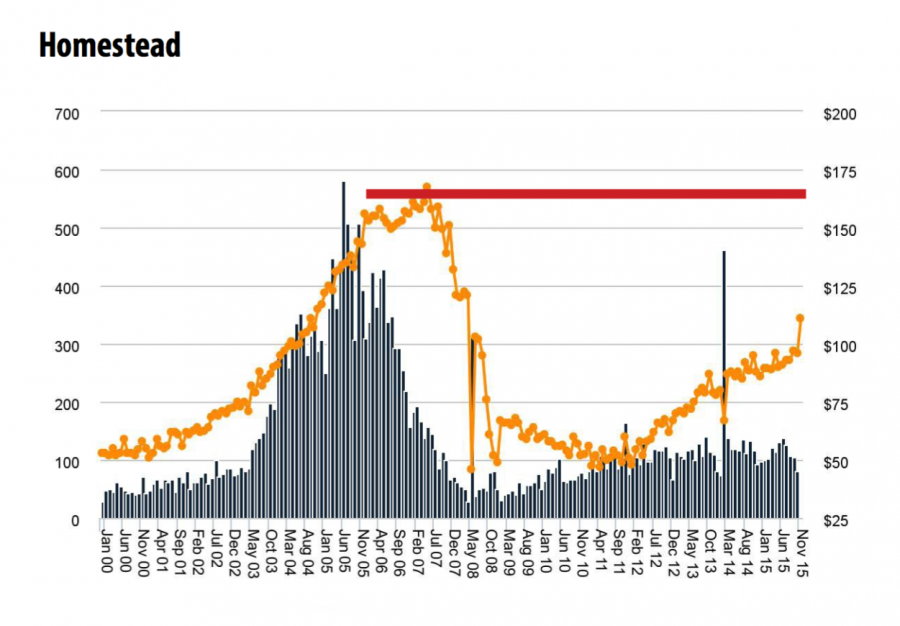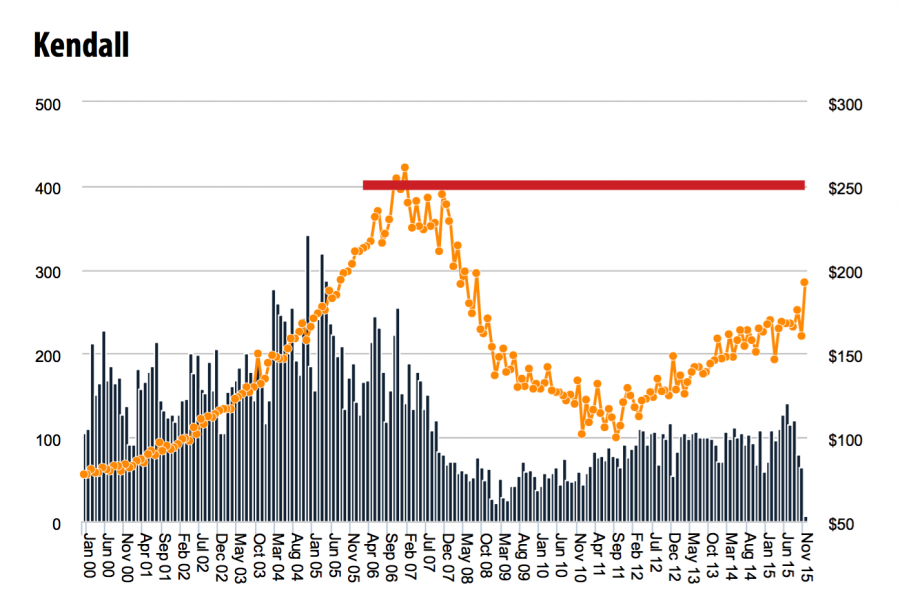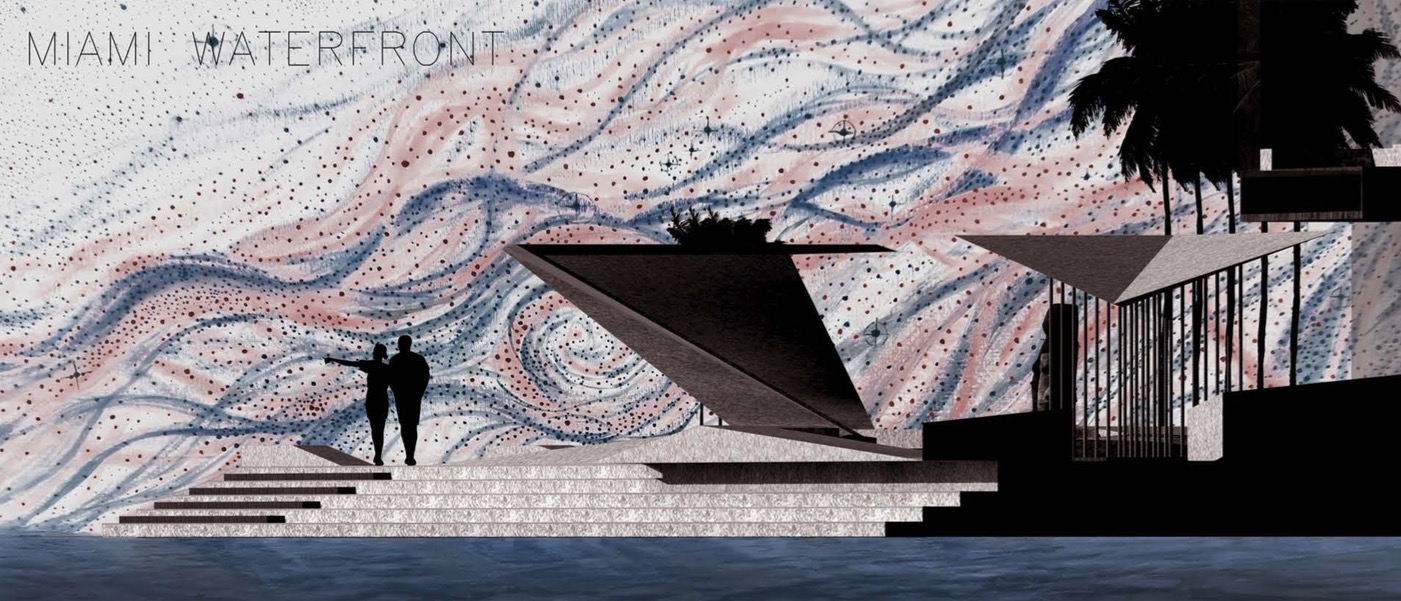The 2008-2011 market crash that left construction cranes dangling above Miami’s unfinished towers and unbuilt outer-suburban communities more-or-less came to a halt in 2010, marking the beginning of a recovery. Unlike that earlier condo boom when increased developments and prices in the outer banlieues mirrored the inner urban core (places like Downtown, Brickell, Edgewater, Coconut Grove, and South Beach) much more closely, suggesting that buyers previously wanted to live out there as much as in here, the core quickly took off and the suburbs did not.
The 2008-2011 market crash that left construction cranes dangling above Miami’s unfinished towers and unbuilt outer-suburban communities more-or-less came to a halt in 2010, marking the beginning of a recovery. Unlike that earlier condo boom when increased developments and prices in the outer banlieues mirrored the inner urban core (places like Downtown, Brickell, Edgewater, Coconut Grove, and South Beach) much more closely, suggesting that buyers previously wanted to live out there as much as in here, the core quickly took off and the suburbs did not.
Living in a new Mediterranean Revival-ish house with a pool, three car garage, driveway for a front yard, and practically zero walkability in Kendall or Homestead, according to the money, appears to be finally less desirable to Miamians than the condos or houses immersed in the sights and sounds of neighorhoods like Downtown and Brickell. Did Miami finally see itself as a ‘real’ city, with Miamians moving back toward the heart, practically undoing what their parents and grandparents had done by moving into postwar golden cities like Kendall, Doral, and Cutler, and willing to pay for it? Investigating the greater cultural, economic, and scientific context might shed light on it. Whatever the reason, since that incredibly impactful shift in where Miamians wanted their little slices of Miami to be, prices in Brickell and Edgewater have overtaken their 2008 highs, while Homestead and Kendall are still 50% cheaper.






